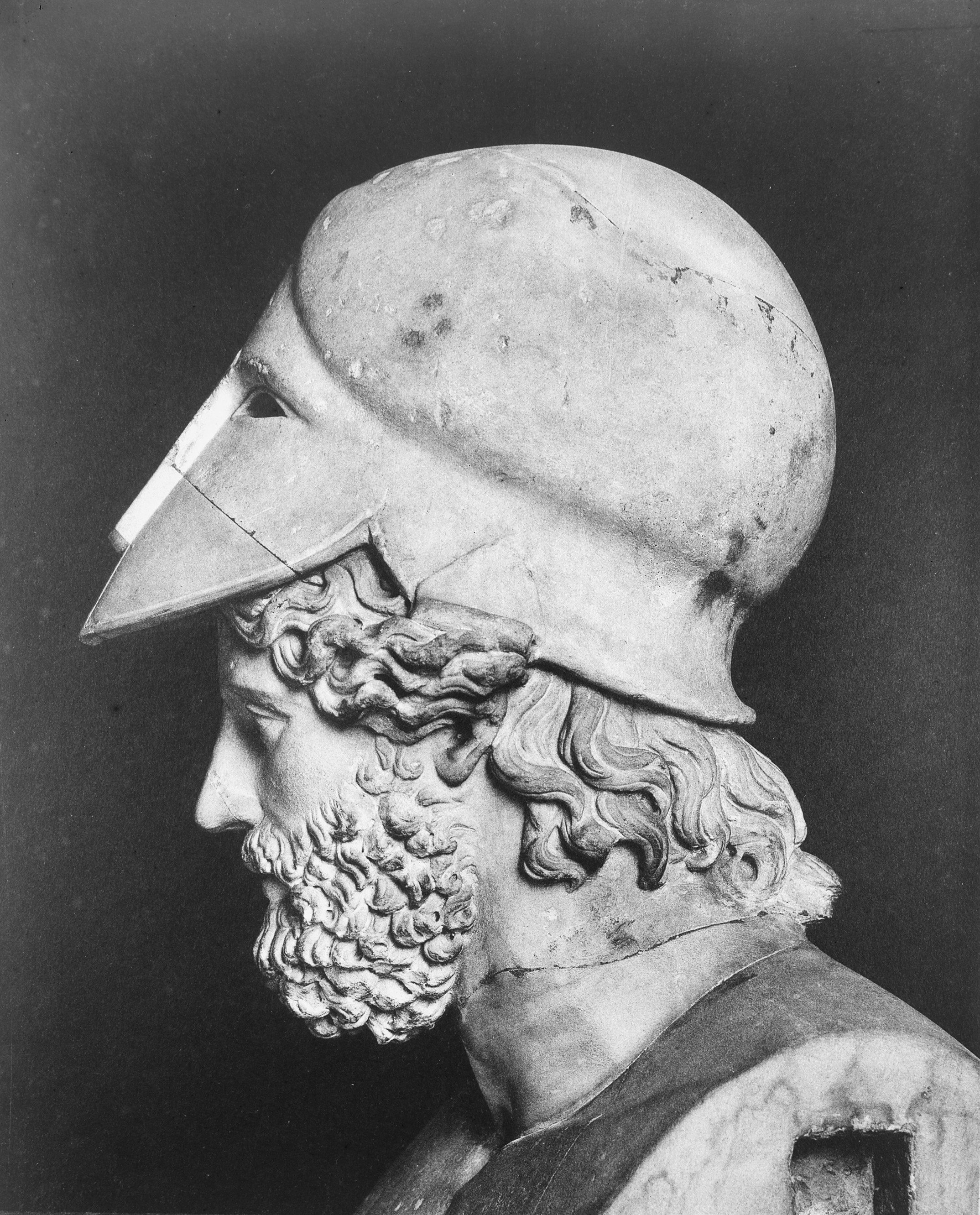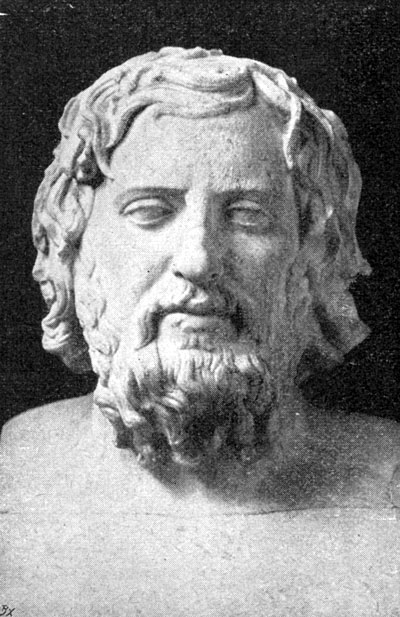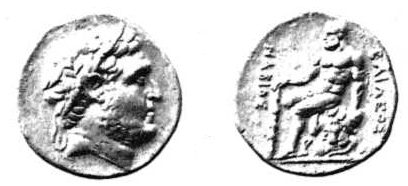|
Demaratos
Demaratus ( el, Δημάρατος ; Doric: ) was a king of Sparta from around 515 BC to 491 BC. The 15th of the Eurypontid line, he was the first son born to his father, King Ariston. As king, Demaratus is known chiefly for his opposition to the co-ruling Spartan king, Cleomenes I. He later fled to Achaemenid Persia, where he was given asylum and land, and fought on the Persian side during the Second Persian invasion of Greece. Early life Demaratus, the son of King Ariston (r. c.550–c.515), belonged to the Eurypontid dynasty, one of the two royal families of Sparta (the other being the Agiads). After Ariston had remained childless from his first two wives, he took the wife of Agetus, one of his friends. Less than 10 months later, Demaratus was born, but Ariston rejected his paternity before the ephors. He nonetheless changed his mind later and recognised Demaratus as his son, who succeeded him at his death around 515. Reign When Cleomenes attempted to make Isagoras ... [...More Info...] [...Related Items...] OR: [Wikipedia] [Google] [Baidu] |
Gongylos
Gongylos ( grc, Γογγύλος), from Eretria in Euboea, was a 5th-century Greek statesman who served as an intermediary between the Spartans and Xerxes I of the Achaemenid Empire, and was a supporter of the latter. After the defeat of the Second Persian invasion of Greece in 479 BCE, Gongylos was forced to flee and take refuge in the Achaemenid Empire. There, Xerxes granted him the territory of Pergamon in Asia Minor from circa 470-460 BCE as a reward. His descendants ruled over the city until at least 400 BCE, forming the Gongylid dynasty of satraps. Gongylos was one of the several Greek aristocrats who took refuge in the Achaemenid Empire following reversals at home, other famous ones being Hippias (tyrant), Hippias, Demaratos, and Themistocles. In general, those were generously welcomed by the Achaemenid kings, and received land grants to support them, and ruled over various cities of Asia Minor. According to Xenophon (''Anabasis'', 7.8.8-17), when he arrived in Mysia ... [...More Info...] [...Related Items...] OR: [Wikipedia] [Google] [Baidu] |
Themistocles
Themistocles (; grc-gre, Θεμιστοκλῆς; c. 524–459 BC) was an Athenian politician and general. He was one of a new breed of non-aristocratic politicians who rose to prominence in the early years of the Athenian democracy. As a politician, Themistocles was a populist, having the support of lower-class Athenians, and generally being at odds with the Athenian nobility. Elected archon in 493 BC, he convinced the polis to increase the naval power of Athens, a recurring theme in his political career. During the first Persian invasion of Greece he fought at the Battle of Marathon (490 BC) and was possibly one of the ten Athenian ''strategoi'' (generals) in that battle. In the years after Marathon, and in the run-up to the second Persian invasion of 480–479 BC, Themistocles became the most prominent politician in Athens. He continued to advocate for a strong Athenian Navy, and in 483 BC he persuaded the Athenians to build a fleet of 200 triremes; these prove ... [...More Info...] [...Related Items...] OR: [Wikipedia] [Google] [Baidu] |
Pergamon
Pergamon or Pergamum ( or ; grc-gre, Πέργαμον), also referred to by its modern Greek form Pergamos (), was a rich and powerful ancient Greece, ancient Greek city in Mysia. It is located from the modern coastline of the Aegean Sea on a promontory on the north side of the river Caicus (modern-day Bakırçay) and northwest of the modern city of Bergama, Turkey. During the Hellenistic period, it became the capital of the Kingdom of Pergamon in 281–133 BC under the Attalid dynasty, who transformed it into one of the major cultural centres of the Greek world. Many remains of its monuments can still be seen and especially the masterpiece of the Pergamon Altar. Pergamon was the northernmost of the seven churches of Asia cited in the New Testament Book of Revelation. The city is centered on a mesa of andesite, which formed its acropolis. This mesa falls away sharply on the north, west, and east sides, but three natural terraces on the south side provide a route up to th ... [...More Info...] [...Related Items...] OR: [Wikipedia] [Google] [Baidu] |
Athenaeus
Athenaeus of Naucratis (; grc, Ἀθήναιος ὁ Nαυκρατίτης or Nαυκράτιος, ''Athēnaios Naukratitēs'' or ''Naukratios''; la, Athenaeus Naucratita) was a Greek rhetorician and grammarian, flourishing about the end of the 2nd and beginning of the 3rd century AD. The ''Suda'' says only that he lived in the times of Marcus Aurelius, but the contempt with which he speaks of Commodus, who died in 192, shows that he survived that emperor. He was a contemporary of Adrantus. Several of his publications are lost, but the fifteen-volume '' Deipnosophistae'' mostly survives. Publications Athenaeus himself states that he was the author of a treatise on the ''thratta'', a kind of fish mentioned by Archippus and other comic poets, and of a history of the Syrian kings. Both works are lost. The ''Deipnosophistae'' The '' Deipnosophistae'', which means "dinner-table philosophers", survives in fifteen books. The first two books, and parts of the third, eleventh and ... [...More Info...] [...Related Items...] OR: [Wikipedia] [Google] [Baidu] |
Anabasis (Xenophon)
''Anabasis'' (; grc-gre, Ἀνάβασις ; an "expedition up from") is the most famous work of the Ancient Greek professional soldier and writer Xenophon. It narrates the expedition of a large army of Greek mercenaries hired by Cyrus the Younger to help him seize the throne of Persia from his brother, Artaxerxes II, in 401 BC. The seven books making up the ''Anabasis'' were composed circa 370 BC. Though as an Ancient Greek vocabulary word, ''ᾰ̓νᾰ́βᾰσῐς'' means "embarkation", "ascent" or "mounting up", the title ''Anabasis'' is rendered in translation as ''The March Up Country'' or as ''The March of the Ten Thousand''. The narration of the army's journey across Asia Minor and Mesopotamia is Xenophon's best known work, and "one of the great adventures in human history". Authorship Xenophon, in his '' Hellenica'', did not cover the retreat of Cyrus but instead referred the reader to the ''Anabasis'' by "Themistogenes of Syracuse"—the tenth-century Suda also de ... [...More Info...] [...Related Items...] OR: [Wikipedia] [Google] [Baidu] |
Xenophon
Xenophon of Athens (; grc, wikt:Ξενοφῶν, Ξενοφῶν ; – probably 355 or 354 BC) was a Greek military leader, philosopher, and historian, born in Athens. At the age of 30, Xenophon was elected commander of one of the biggest Ancient Greek mercenaries, Greek mercenary armies of the Achaemenid Empire, the Ten Thousand, that marched on and came close to capturing Babylon in 401 BC. As the military historian Theodore Ayrault Dodge wrote, "the centuries since have devised nothing to surpass the genius of this warrior". Xenophon established precedents for many logistical operations, and was among the first to describe strategic flanking maneuvers and feints in combat. Xenophon's ''Anabasis (Xenophon), Anabasis'' recounts his adventures with the Ten Thousand while in the service of Cyrus the Younger, Cyrus's failed campaign to claim the Persian throne from Artaxerxes II of Persia, and the return of Greek mercenaries after Cyrus's death in the Battle of Cunaxa. ''Anabasis ... [...More Info...] [...Related Items...] OR: [Wikipedia] [Google] [Baidu] |
Nabis
Nabis ( grc-gre, Νάβις) was the last king of independent Sparta. He was probably a member of the Heracleidae, and he ruled from 207 BC to 192 BC, during the years of the First and Second Macedonian Wars and the eponymous "War against Nabis", i.e. against him. After taking the throne by executing two claimants, he began rebuilding Sparta's power. During the Second Macedonian War, Nabis sided with King Philip V of Macedon and in return he received the city of Argos. However, when the war began to turn against the Macedonians, he defected to Rome. After the war, the Romans, urged by the Achaean League, attacked Nabis and defeated him. He then was assassinated in 192 BC by the Aetolian League. He represented the last phase of Sparta's reformist period. Ruler of Sparta In the years following the defeat of the reformist king Cleomenes III of Sparta at the Battle of Sellasia (222 BC), Sparta experienced a power vacuum that eventually led to the Spartan kingship being bestowed on a ... [...More Info...] [...Related Items...] OR: [Wikipedia] [Google] [Baidu] |
Asia Minor
Anatolia, tr, Anadolu Yarımadası), and the Anatolian plateau, also known as Asia Minor, is a large peninsula in Western Asia and the westernmost protrusion of the Asian continent. It constitutes the major part of modern-day Turkey. The region is bounded by the Turkish Straits to the northwest, the Black Sea to the north, the Armenian Highlands to the east, the Mediterranean Sea to the south, and the Aegean Sea to the west. The Sea of Marmara forms a connection between the Black and Aegean seas through the Bosporus and Dardanelles straits and separates Anatolia from Thrace on the Balkan peninsula of Southeast Europe. The eastern border of Anatolia has been held to be a line between the Gulf of Alexandretta and the Black Sea, bounded by the Armenian Highlands to the east and Mesopotamia to the southeast. By this definition Anatolia comprises approximately the western two-thirds of the Asian part of Turkey. Today, Anatolia is sometimes considered to be synonymous with Asia ... [...More Info...] [...Related Items...] OR: [Wikipedia] [Google] [Baidu] |
Achaemenid Empire
The Achaemenid Empire or Achaemenian Empire (; peo, 𐎧𐏁𐏂, , ), also called the First Persian Empire, was an ancient Iranian empire founded by Cyrus the Great in 550 BC. Based in Western Asia, it was contemporarily the largest empire in history, spanning a total of from the Balkans and Egypt in the west to Central Asia and the Indus Valley in the east. Around the 7th century BC, the region of Persis in the southwestern portion of the Iranian plateau was settled by the Persians. From Persis, Cyrus rose and defeated the Median Empire as well as Lydia and the Neo-Babylonian Empire, marking the formal establishment of a new imperial polity under the Achaemenid dynasty. In the modern era, the Achaemenid Empire has been recognized for its imposition of a successful model of centralized, bureaucratic administration; its multicultural policy; building complex infrastructure, such as road systems and an organized postal system; the use of official languages across ... [...More Info...] [...Related Items...] OR: [Wikipedia] [Google] [Baidu] |
Robin Waterfield
Robin Anthony Herschel Waterfield (born 1952) is a British classical scholar, translator, editor, and writer of children's fiction. Career Waterfield was born in 1952, and studied Classics at Manchester University, where he achieved a first class degree in 1974. He went on to research ancient Greek philosophy at King's College, Cambridge until 1978, after which he became a lecturer at Newcastle University and then St Andrews University. He later became a copy-editor and later a commissioning editor for Penguin Books. He is now a self-employed writer. Works Translations * ''Plato: Philebus'' (translation, introduction, notes), Penguin Books (Penguin Classics), 1982 * ''Plato: Theaetetus'' (translation, introduction, notes), Penguin Books (Penguin Classics), 1987 * ''Plato: Hippias Major, Hippias Minor, Euthydemus'' (translations, introductions, notes) in Plato: Early Socratic Dialogues (ed. T.J. Saunders), Penguin Books (Penguin Classics), 1987 * ''Ps.-Iamblichus: The Theology of ... [...More Info...] [...Related Items...] OR: [Wikipedia] [Google] [Baidu] |
Battle Of Thermopylae
The Battle of Thermopylae ( ; grc, Μάχη τῶν Θερμοπυλῶν, label=Greek, ) was fought in 480 BC between the Achaemenid Persian Empire under Xerxes I and an alliance of Greek city-states led by Sparta under Leonidas I. Lasting over the course of three days, it was one of the most prominent battles of both the second Persian invasion of Greece and the wider Greco-Persian Wars. The engagement at Thermopylae occurred simultaneously with the Battle of Artemisium: between July and September 480 BC. The second Persian invasion under Xerxes I was a delayed response to the failure of the first Persian invasion, which had been initiated by Darius I and ended in 490 BC by an Athenian-led Greek victory at the Battle of Marathon. By 480 BC, a decade after the Persian defeat at Marathon, Xerxes had amassed a massive land and naval force, and subsequently set out to conquer all of Greece. In response, the Athenian politician and general Themistocles proposed that the allie ... [...More Info...] [...Related Items...] OR: [Wikipedia] [Google] [Baidu] |


_-_Turkey_-_10_(5747249729).jpg)




